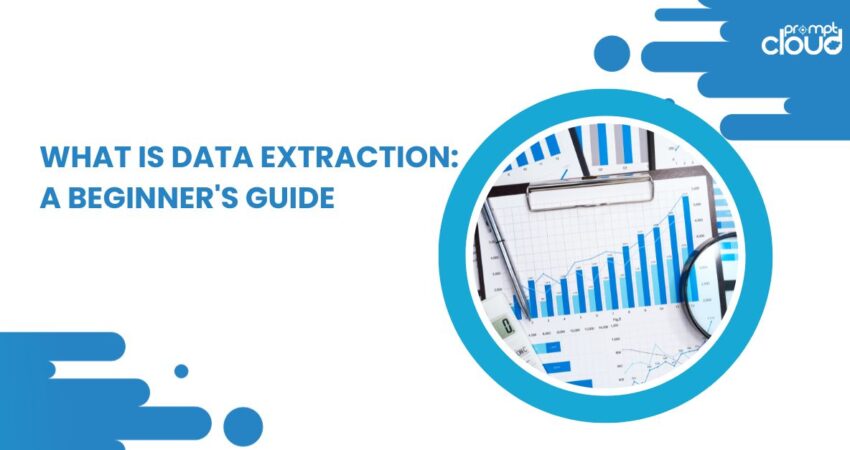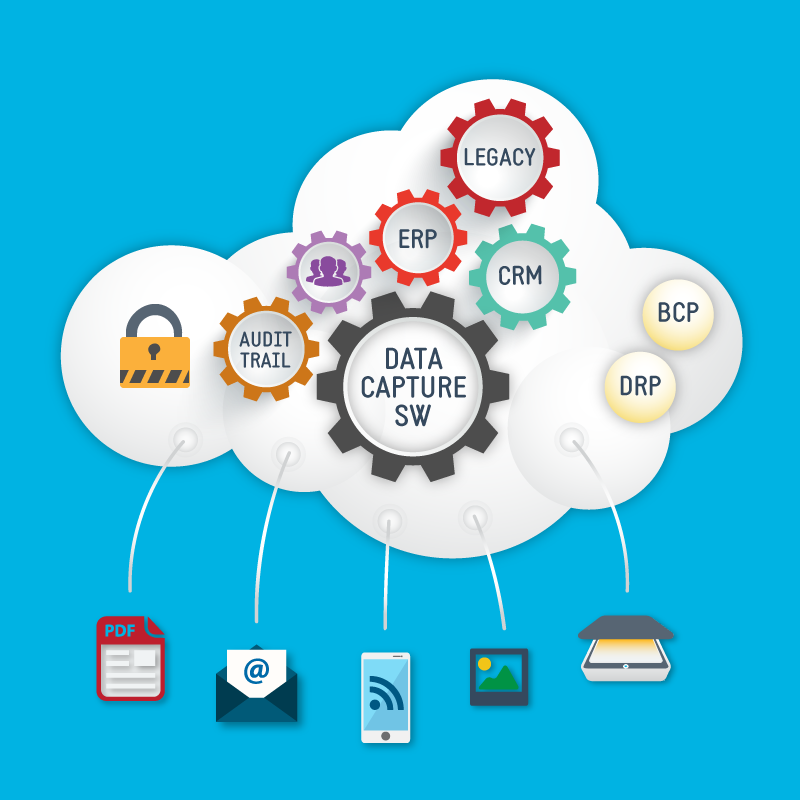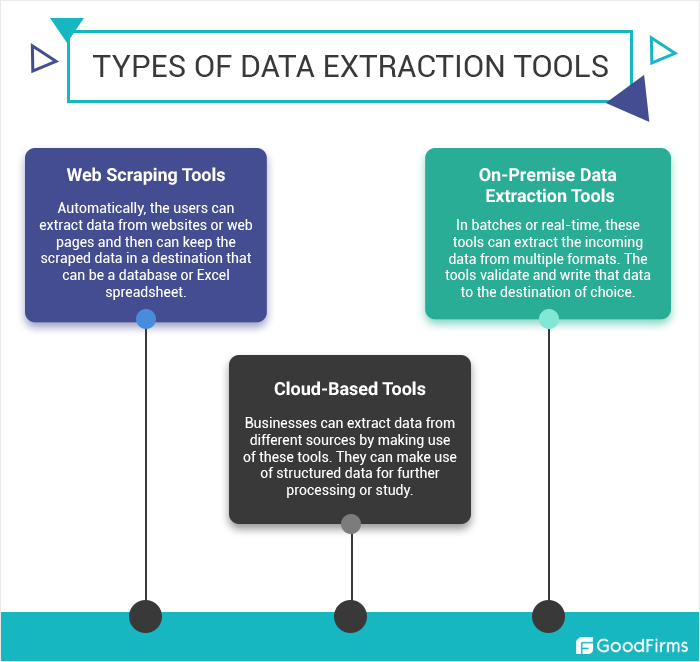
In an era where data is as valuable as currency, the ability to extract this data efficiently can set your business apart from the competition. Data extraction is not just a technical process; it’s a strategic one that, when done right, can unveil insights leading to smarter business decisions and robust growth. This blog post dives into the what, why, and how of data extraction, giving you the knowledge to harness its full potential.
What is Data Extraction
Data extraction is the process of retrieving structured or unstructured data from various sources such as databases, websites, documents, images, etc. This data is then converted into a more manageable and usable format, such as a spreadsheet or database. The goal is to collect this information in a way that preserves its meaning while making it accessible for analysis and business intelligence.

Source: https://papersoft-dms.com/
Why is Data Extraction Crucial
- Informed Decision-Making: Extracted data provides the foundation for analytics that can uncover trends, predict outcomes, and guide strategic decisions.
- Efficiency: Automating data extraction processes saves time and resources, eliminating manual errors and redundancies.
- Integration: It allows for the merging of data from disparate sources, providing a holistic view of operations.
- Competitive Advantage: Quick access to relevant data can be the edge a business needs to outpace competition.
Types of Data Extraction
In the information-heavy world we live in, the ability to extract data efficiently from a variety of sources is invaluable. Data extraction processes differ not just in their methodology but also in their application. Understanding the types of data extraction will help you select the appropriate technique for your data needs.
1. Manual Data Extraction
Manual data extraction is the most basic form, involving human input to collect data from physical or digital sources. This method is often slow and prone to error but can be useful when dealing with complex information that requires human judgment.
2. Automated Data Extraction
This type utilizes software and tools to automatically collect and process data, significantly speeding up the process and reducing the likelihood of errors.
3. Web Data Extraction (Web Scraping)
Web scraping is a technique used to extract data from websites. This is done through software that mimics human web surfing to gather specific information from online sources.
4. Structured Data Extraction
This type refers to the retrieval of data that is organized in a structured format, such as databases or spreadsheets, where the data is consistent and follows a specific schema.
5. Unstructured Data Extraction
Unstructured data extraction deals with data that does not follow a specific format or structure, such as emails, PDFs, or multimedia.
6. Semi-Structured Data Extraction
Semi-structured data extraction is for data that doesn’t reside in a relational database but has some organizational properties, making it easier to analyze than unstructured data.
7. Query-Based Data Extraction
This method involves using queries to retrieve data from databases. It is a highly efficient form of structured data extraction and can provide real-time or scheduled information retrieval.
Data Extraction Techniques

- Automated Data Capture: Tools that automatically detect and extract relevant information from documents or webpages.
- Web Scraping: Using software to simulate human exploration of the web to gather specific data.
- Text Analytics: Employing natural language processing to extract information from unstructured text.
- ETL Processes: Standing for Extract, Transform, Load, these are integrated systems that pull data from various sources, convert it into a useful format, and store it in a data warehouse.
Best Practices for Effective Data Extraction
- Define Clear Objectives: Know what you need from your data extraction efforts to choose the right tools and methods.
- Ensure Data Quality: Validate and clean your data as part of the extraction process to maintain integrity.
- Stay Compliant: Be aware of data privacy laws and regulations to ensure your data extraction methods are legal.
- Scalability: Choose solutions that can grow with your data needs to avoid future overhauls.
Challenges in Data Extraction
Data extraction, while invaluable, presents a host of challenges that can complicate the process for businesses and individuals alike. These challenges can impact the quality, speed, and efficiency of data-driven initiatives. Below, we delve into some of the common obstacles encountered in the process of data extraction.
- Data Quality Issues:
- Inconsistent Data: Extracting data from various sources often means dealing with inconsistencies in format, structure, and quality, which can lead to inaccurate data sets.
- Incomplete Data: Missing values or incomplete records during extraction can distort analytics outcomes.
- Duplicates: Redundant data can occur during extraction, leading to inefficiencies and skewed analysis results.
- Scalability Concerns:
- Volume: As data volumes grow, it becomes increasingly challenging to extract information in a timely and efficient manner without compromising system performance.
- Evolving Data: The continuous evolution of data necessitates a scalable extraction process that can adapt to changes without needing extensive reconfiguration.
- Complex and Diverse Data Sources:
- Variety: Extracting data from a wide array of sources with different formats (PDFs, web pages, databases, etc.) requires versatile and sophisticated extraction tools.
- Accessibility: Data locked in legacy systems or through proprietary formats can be particularly challenging to access and extract.
- Technical Limitations:
- Integration Difficulties: Integrating extracted data into existing systems can pose technical challenges, especially when dealing with different technologies or outdated infrastructure.
- Lack of Expertise: There’s often a steep learning curve associated with the tools and techniques needed for efficient data extraction, requiring specialized knowledge.
- Legal and Compliance Issues:
- Privacy Regulations: Adhering to strict data privacy laws, such as GDPR or HIPAA, can complicate the extraction process, as certain data may require additional handling protocols.
- Intellectual Property: When extracting data from external sources, there’s a risk of infringing on intellectual property rights, which can lead to legal complications.
- Real-time Data Extraction:
- Latency: There’s a growing need for real-time data extraction in certain sectors, such as finance or security, where latency can significantly impact decision-making.
- Infrastructure: Real-time data extraction requires robust infrastructure that can handle continuous data flows without bottlenecks.
- Data Transformation:
- Format Conversion: Extracted data often needs to be transformed into a different format for analysis, which can be a complex and error-prone process.
- Maintaining Context: Ensuring that data retains its meaning after extraction and transformation is critical but challenging, particularly when dealing with unstructured data.
- Security Concerns:
- Data Breaches: There is always a risk of data breaches when extracting sensitive or confidential information, which requires stringent security measures.
- Data Corruption: Data can become corrupted during extraction due to software errors, compatibility issues, or hardware failures.
Conclusion
As the lifeline of the data analytics process, data extraction can seem daunting, but with the right approach, it becomes a catalyst for insight and opportunity. By understanding its principles and leveraging current technologies, any organization can unlock the full potential of their data.




















